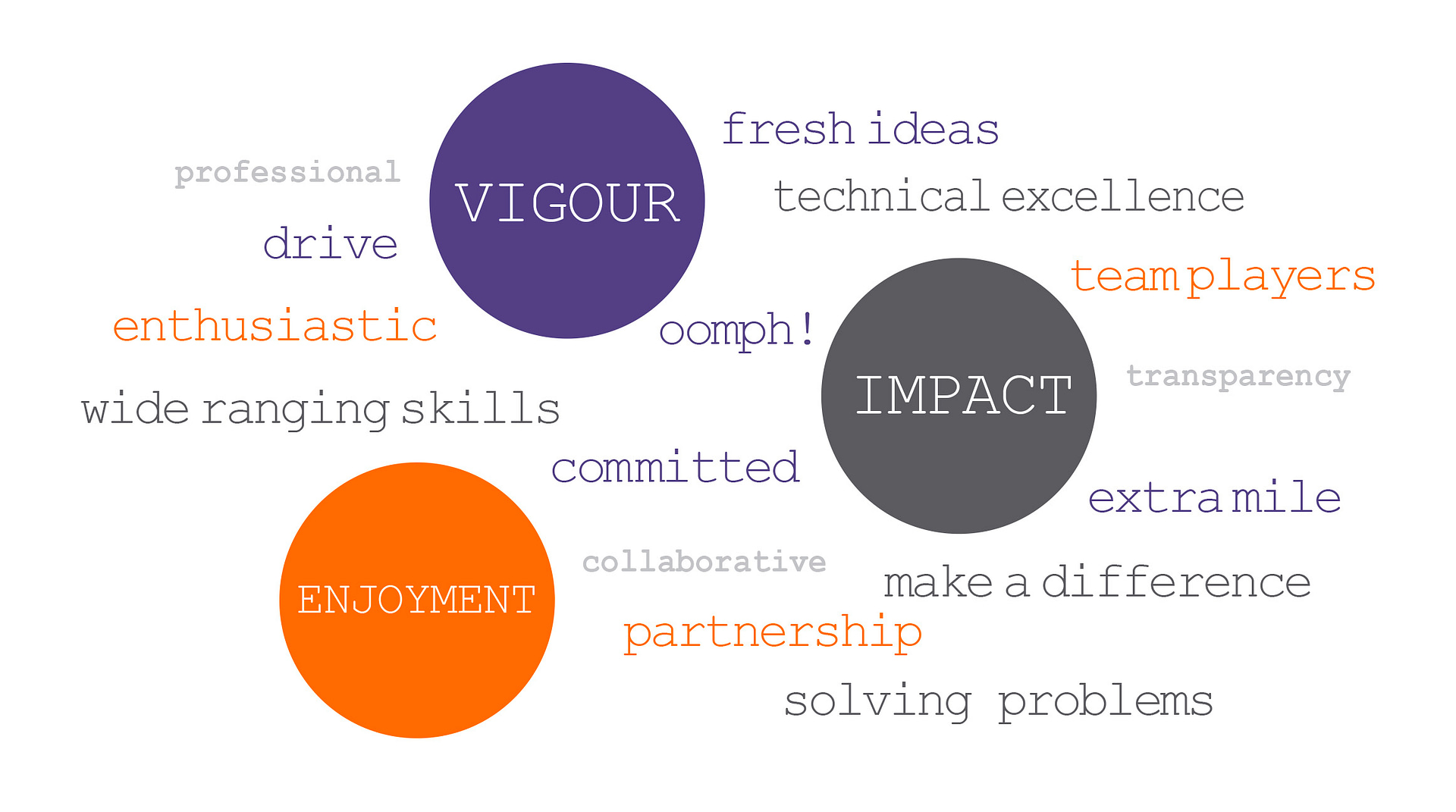Daniel Priestley emphasises the importance of brand assets in his latest book, 24 Assets:
What do Apple, Nike and Virgin have in common? Their brand is an asset. They’re not just a name, they encompass a vision and mission, they have values, there is a certain feel and look. When customers think about these brands, emotions are evoked and memories are prompted. Today, marketers know that they can create a unique perception of a brand in customers’ minds.
(Source: https://my.dent.global/uk/london/)
You’re probably aware that brand identities are made up of five basic elements:
- Logo
- Colour
- Typeface
- Imagery
- Graphic devices
Depending on which elements you use and how you use them, every company’s brand identity can look different.
Even if you use Microsoft Office or Apple’s Keynote templates, you still need to ensure consistency across ALL visual elements that support and express a company’s core values. This is why we need brand guidelines. Brand guidelines ensure suppliers and marketing departments respect your brand identity and present your company cohesively.
Brand guidelines save you money
So, when planning your brand identity, make sure you also budget enough for a brand guideline document. Your marketing team and partners will thank you! Any marketer or PR company knows too well the frustration of having to find your brand’s colour references and typefaces for an urgent press release. This is one marketing document that will save time and energy over and over again.
What do brand guidelines include?
Guidelines need to be detailed to suit audiences and budgets. Basic information may simply be only the colour references, but details for the correct usage of primary and secondary palettes is also important in creating a distinctive look and feel for a business.
For typographywe not only need to specify the names and weights of the fonts, but detail their usage for headings, subheadings, body copy and captions. These specifications will likely be different for digital applications, in-house produced documents and professionally produced items. This more detailed guideline document has a wider application, lifespan and impact on brand consistency.
Once these basic elements for an identity are established, the next step is to design and specify each applicationof the brand whether it be literature, web, email, presentations, signage, stationery, exhibitions, conference materials, or promotional items.




Leave a Reply
You must be logged in to post a comment.